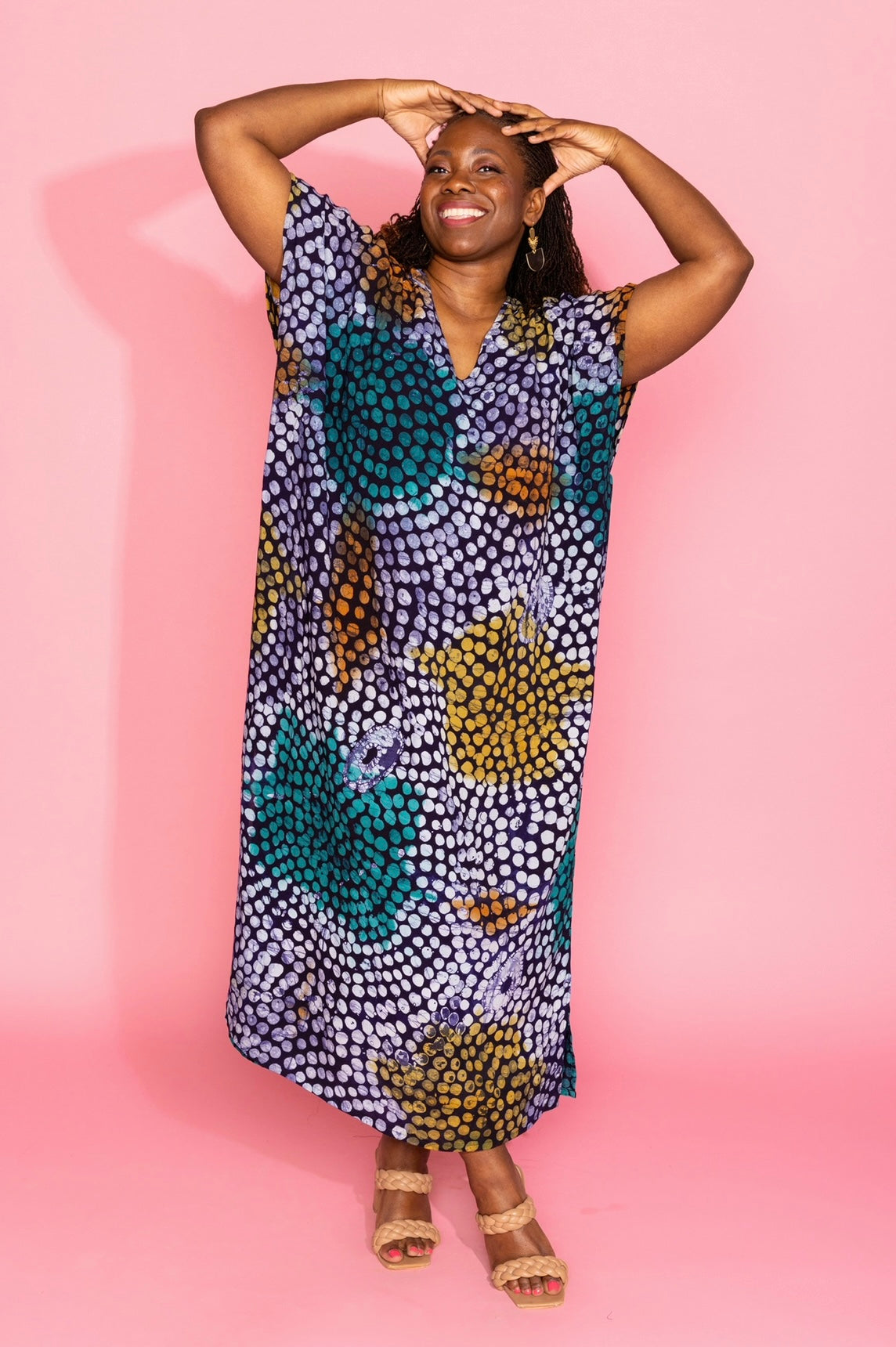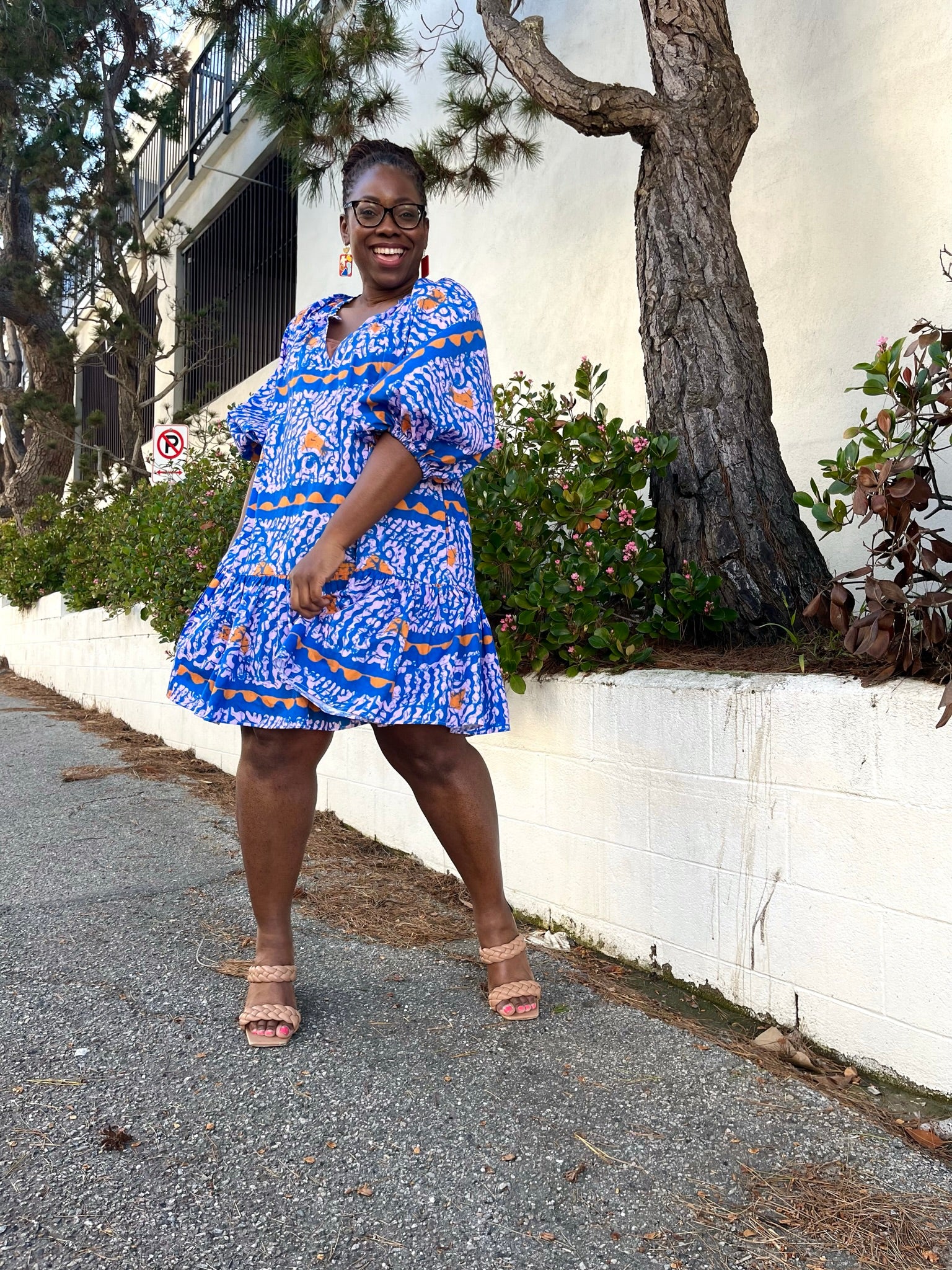
Suakoko Betty at African Fashion Week 2011, use of Ankara fabric in contemporary collections/styles.
I’ll admit it. I’ll even type it down. When I was younger I had a love/hate relationship with the “African” section of my mother’s closet. At times I thought the styles to be too traditional, limited to the three piece outfit that I was accustomed to seeing my mother dolled up in.
I remember the strong “football shouldered” blouse, the “mermaid” wrapped skirt, the head tie –which added at a bare minimum another foot to her small 5’2 frame, and her accompanying shawl which she threw over her shoulder, as if she weren’t already wearing enough fabric.
At twelve it was a bit overwhelming, but despite the excessive cloth and what my sister and I would tease as her “Coming to America” getup, the one thing that always kept me in awe was the eccentric designs and color schemes displayed in the fabrics she wore. Beyond the traditional styles, it was the one aspect that never skimped on excitement.
To me, the textiles she wore not only explored the marriage between art and fashion but also highlighted the rich aesthetic of various African nations and cultures. In addition, the cloths introduced the amazing artistic vision and creativity of African weavers, designers, dyers and artists, and their ability to transform art into clothing.
One of many art based cloths I saw was the Adire fabric. Originated by the people of southwestern Nigeria, the cloth displays hand painted art and highlights the regions use of plant based dying techniques to cultivate simple yet unique canvases. Prior to dying the cloth, local African designers use a cassava starch paste to hand paint or stencil various pictures and designs onto the fabric. Once developed, the unique designs and practice attracted buyers and fashion enthusiasts from all over Africa.

The popular Nigerian Aso Oke fabric, which my mother wore often, was more elaborate with color and usually designed into eccentric blouses, wrap skirts, head wraps and shawls for women in West Africa. The embellished fabric, bright colors and detailed embroidering was worn in celebration of unions, festivals and funerals. Original Aso oke textiles were comprised of three different cloths –the etu, sanyan, and alaari and woven with a narrow-strip loom weaving technique.

Woman dressed in Nigerian Aso Oke fabric and Gele Headtie
Of the various African textiles –the Ankara fabric, I later uncovered, was my favorite to revel in. Unlike other materials I stumbled across in my mother’s closet, it was much lighter in weight and the color schemes along with the patterns produced one of the most versatile African textiles. The wax-resist dye cotton fabric was originally produced in Holland using a print process that applies wax and dyes in layers to mimic the hand-dyed batik process. Ankara is now produced in Nigeria and Ghana and is not only innovative with its geometric designs and colorful patterns but also because of its ability to relay African tales and proverbs and pay homage to various West African tribes.
Today African textiles have evolved from the classic three piece suit and into more contemporary blouses, pencil skirts, minidresses, trousers, jumpsuits, and blazers worn by celebrities like Beyonce, Solange, Alicia Keys, and Kelis.

Mom, dressed in adire (indigo dyed) fabric.
While the styles continue to evolve one thing that has yet to be compromised is the beautiful craft of the textiles, the artistic use of colors, and the weaving –making it so much more than just my mama’s old dress, it makes for a rich and vibrant history…Thanks Mom.



Comments
Amazing Look of African Attire styles
beautiful and amazing African Attire. i have ever seen